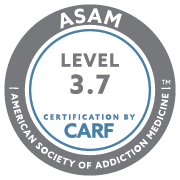What Is Alternative Sentencing?

Cultivating a drug or alcohol addiction can often result in crimes like stealing or selling drugs to support your habit. Substance addiction has been known to cause people to lie, cheat, steal, and commit crimes. This vicious cycle and the brain changes from addiction can alienate loved ones, cause users to lose their jobs, and neglect the fear of going to jail. Without proper substance addiction treatment to break the cycle of dependence, the crimes and jail can be a difficult task to end. Even those who go to jail and are released find themselves getting back into trouble for the same reason they were locked up, to begin with.
Alternative sentencing programs are an option for drug offenders who are redirected to addiction treatment rather than jail, where their abuse would go untreated. A judge will usually offer an alternative sentence to nonviolent drug offenders to provide an opportunity to recover and start fresh. These sentences are intended to help substance addicts recover so they don’t reenter the justice system.
Alternative drug treatment programs give hope to nonviolent drug offenders to allow them to get help for their addiction. Below is an outline of how alternative sentencing can help women seek drug and alcohol treatment while staying out of jail.
How Alternative Sentencing Works
When someone is arrested for a drug-related crime like possession, they might get the option to enroll in a rehab program rather than jail. When this occurs, addiction treatment becomes mandatory. The substance abuser will be required to complete the entire addiction treatment program and partake in random drug tests. If they leave or don’t finish rehab, they risk being taken into custody and going to jail.
 The court-approved alternative drug treatment programs will appoint a specialist to assist the substance abuser and create a substance addiction treatment plan. Some court-ordered alternative sentencing programs for women include:
The court-approved alternative drug treatment programs will appoint a specialist to assist the substance abuser and create a substance addiction treatment plan. Some court-ordered alternative sentencing programs for women include:
- Medical detox
- Individual therapy
- Group counseling
- Coping skill development
- Addiction education
- 12-step programs
These substance abuse treatment programs for women can be short- or long-term, proceeding anywhere from 30 days to a full year depending on the addiction’s severity. If a treatment specialist believes you can overcome the addiction with an intensive outpatient program, that can also be an option. If the addiction is more severe, the recommendation is usually to attend residential treatment for women’s addiction.
Qualifying for Alternative Sentencing
Alternative sentencing programs require commitment from the convicted substance abuser to complete rehab successfully. The guidelines usually also require probation and random drug tests. A convicted substance abuser’s daily schedule can include meetings with addiction counselors and mental health specialists.
Female candidates who are eligible for substance abuse treatment must:
- Have committed a nonviolent crime like drug possession or selling
- Not have a criminal record
- Show they can benefit from substance abuse treatment
- Complete a mental health evaluation
- Demonstrate dedication to recovery and living a sober lifestyle
Choosing Substance Abuse Treatment Over Jail
Alternative sentencing programs were built to believe that substance addiction treatment is a more practical solution for nonviolent drug offenders than jail. Alternative sentencing programs recognize that addiction turns even good women into criminals, and they deserve a chance to recover from their addiction illness. For most of the offenders who are directed into these programs, alternative sentencing is their primary opportunity to receive detox and substance addiction treatment.
Deviation to a substance addiction rehab program can occur at the state, county, or federal level, depending on the committed nonviolent drug crime. In 1984, the Sentencing Reform Act was launched to help reduce the U.S. court systems cases by implementing alternatives to prison for drug-related crimes. This act is still practiced today as a diversion program to allow courts to offer nonviolent drug offenders a chance to receive treatment.
Committing to Recovery
 Alternative sentencing programs require nonviolent drug offenders to commit themselves to complete a rehab program successfully. They’ll be required to go through probation and submit regular drug screenings at a treatment facility. Their schedule must include regular meetings with their probation officer, mental health specialist, and addiction treatment therapist.
Alternative sentencing programs require nonviolent drug offenders to commit themselves to complete a rehab program successfully. They’ll be required to go through probation and submit regular drug screenings at a treatment facility. Their schedule must include regular meetings with their probation officer, mental health specialist, and addiction treatment therapist.
Suppose the addiction treatment specialist believes the abuse can be overcome in an outpatient setting. In that case, the client will be referred to that center to participate in individual and family therapy and support groups. For women with a more severe addiction, the treatment specialist may recommend spending time at a residential treatment center to receive around-the-clock supervision.
Upon completing substance addiction treatment, the next step will be aftercare, including either a group home or continued therapy to maintain sobriety.
Benefits of Alternative Sentencing
Alternative drug treatment programs can help both the offender and their community. Across the nation, the criminal justice system has been overloaded with nonviolent drug-related cases. Taxpayers have paid millions of dollars to incarcerate offenders for nonviolent drug-related crimes. Incarceration is essential in some situations to keep the public safe from hardened criminals, but it’s a waste of money for nonviolent drug offenders. Placing nonviolent drug offenders in jail costs the community a lot of money without implementing a long-term solution for their substance addiction.
Benefits of alternative drug treatment programs for nonviolent drug offenders include:
- Instead of jail, choosing substance abuse treatment can save taxpayers money by helping nonviolent drug offenders leave the criminal justice system and remain sober.
- Alternative sentencing redirects nonviolent offenders out of the criminal justice system, so the courts aren’t flooded with nonviolent drug cases.
- Substance abuse treatment gets to the source of drug-related offenses rather than letting the problem proceed by sending nonviolent drug offenders to jail.
- Alternative sentencing allows nonviolent drug offenders to remain in the community, continue working, care for loved ones, and contribute to society.
- Outpatient substance abuse treatment programs can benefit nonviolent drug offenders’ families by allowing children to keep communication with their parents.
Also, substance abuse treatment allows clients to find out the cause of their addiction, heal wounds from the past, and mend broken relationships with loved ones. Substance abuse treatment won’t erase the past, but it’ll give people a foundation for making a new start.
Alternative Sentencing Candidacy
 For those arrested for a nonviolent drug offense, the opportunity to participate in an alternative sentencing program may be an option. Prosecutors, law enforcement agents, and defense attorneys are usually willing to help first-time nonviolent drug offenders to receive treatment rather than sending them straight to jail. The belief is that these offenders who need substance abuse treatment will be exposed to violence and other substance abuse.
For those arrested for a nonviolent drug offense, the opportunity to participate in an alternative sentencing program may be an option. Prosecutors, law enforcement agents, and defense attorneys are usually willing to help first-time nonviolent drug offenders to receive treatment rather than sending them straight to jail. The belief is that these offenders who need substance abuse treatment will be exposed to violence and other substance abuse.
Determining who’s a good candidate for alternative drug treatment programs will be determined by a mental health professionals evaluation. A case manager is appointed to each nonviolent drug offender in the states that participate in alternative sentencing programs. Alternative sentencing doesn’t mean offenders entirely off the hook. Once the court has approved a substance abuse treatment plan, the offender will have to prove that you’re committed to completing the program.
Examples of commitments offenders who are approved for alternative sentences include:
- Taking random drug screenings
- Attending appointments with probation officers and counselors as scheduled
- Keeping in touch with the case manager, who is a liaison to the court
- Completing a substance abuse treatment program at a qualified rehab center
- Attending individual and group therapy, along with 12-step meetings, and aftercare as ordered by your addiction treatment plan
Substance abuse treatment programs usually also offer vocational training for the offender, drug education for families and partners, and assistance in re-entering their community after rehab.
Choosing New Directions for Women for Alternative Sentencing
Alternative sentencing programs can help both the offender and the community by treating addiction causes rather than simply giving out punishments. Alternative sentencing gives a substance abuser a better chance for long-term recovery, building a stronger family and community, and finding a better life quality.
 New Directions For Women is a preferred facility because it can treat women long-term while communicating with probation officers and courts and facilitating escorts to these appointments. Treatment here is much more than a chance to avoid or reduce jail time—it is an opportunity to begin anew.
New Directions For Women is a preferred facility because it can treat women long-term while communicating with probation officers and courts and facilitating escorts to these appointments. Treatment here is much more than a chance to avoid or reduce jail time—it is an opportunity to begin anew.
Women referred to New Directions for Women will receive an assessment and recommendations for the appropriate level of care. New Directions for Women works directly with the court and probation departments to ensure accountability by providing monthly updates and client progress reports upon request.
Other benefits of choosing New Directions for Women include:
- The right treatment center can make the difference. New Directions for Women can help clients eligible for alternative sentencing. New Directions for Women is licensed by the California Department of Alcohol & Drug Programs.
- New Directions for Women works with the criminal justice system to advocate for residential treatment in a therapeutic community instead of incarceration and conviction – court and probation approved.
- New Directions for Women helps clients initiate and maintain recovery from drugs and alcohol by offering a widely recognized residential treatment program as an effective alternative to incarceration.
Contact us today for additional information about the Alternative Sentencing program at New Directions for Women.









